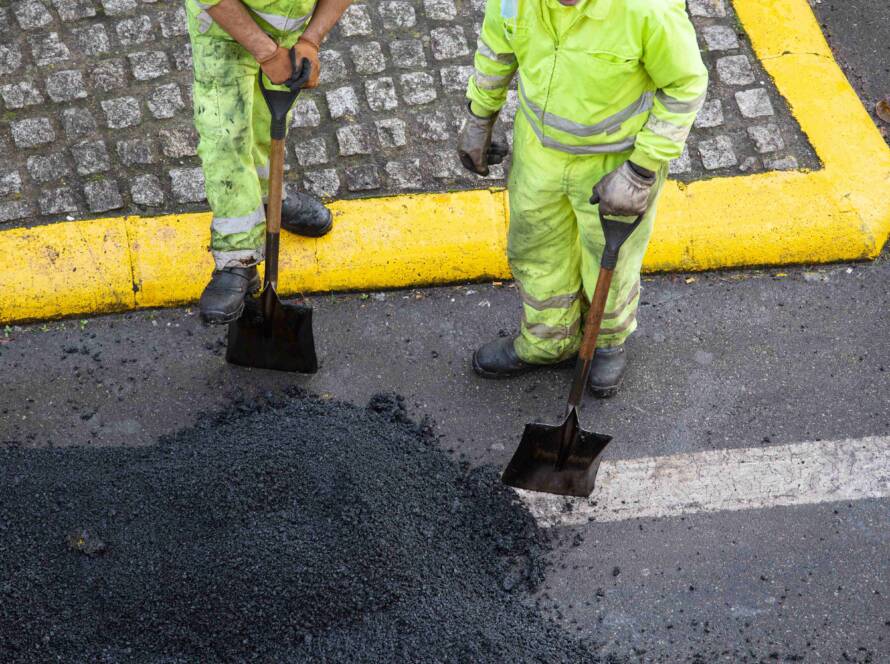As summer temperatures rise, the risk to your asphalt surfaces increases too. Long exposure to sunlight and high heat can drastically shorten asphalt longevity, especially in regions like Hertfordshire where both residential and commercial surfacing projects are in constant demand.
Whether you’re planning a tarmac driveway in Hertfordshire, managing a public footpath, or overseeing a commercial car park, understanding how UV rays and heat impact asphalt is key to protecting your investment.
The Science Behind Asphalt Longevity
Asphalt longevity refers to how long an asphalt surface remains functional, safe, and aesthetically pleasing before requiring significant repairs or resurfacing. This lifespan depends on several factors, including installation quality, traffic load, moisture exposure—and increasingly, UV radiation and extreme heat.
The Effects of UV Rays on Asphalt
1. Oxidation and Surface Degradation
Ultraviolet rays trigger oxidation, which causes the oils in asphalt to dry out. This leads to the surface becoming brittle, causing it to crack and erode more quickly. Tarmac surfacing in Hertfordshire that’s regularly exposed to direct sunlight without protection may see its lifespan reduced by several years.
2. Loss of Flexibility
Over time, UV rays cause the surface to lose elasticity. This makes it more susceptible to cracking under weight—particularly problematic for car park tarmac services in Hertfordshire, where high traffic volume puts constant pressure on the surface.

The Role of Heat in Surface Deterioration
1. Softening and Deformation
At extremely high temperatures, asphalt can soften, making it more prone to deformation. Vehicles may leave impressions or ruts, especially on poorly compacted or overloaded surfaces.
2. Thermal Expansion and Contraction
As the surface heats up and cools down repeatedly, it expands and contracts. This cycle stresses the asphalt, leading to fatigue cracking—one of the most common signs of reduced asphalt longevity.
Which Surfaces Are Most at Risk?
- Tarmac pathways in Hertfordshire with minimal shade
- Tarmac driveways in Hertfordshire that face direct sun exposure
- Commercial tarmac surfaces like car parks and loading bays
- Areas with heavy vehicle use and poor drainage
How to Protect Asphalt During Summer
✅ Regular Sealcoating
Applying a UV-resistant sealcoat provides a protective barrier that shields asphalt from the sun and prolongs its life. This is a smart investment for any tarmac installation in Hertfordshire.
✅ Proper Drainage
Standing water from occasional summer storms can worsen heat-related damage. Ensuring proper drainage during the tarmac surfacing process is essential.
✅ Timely Repairs
Small cracks or surface wear caused by summer heat should be addressed immediately to prevent further damage. Delayed maintenance can drastically reduce asphalt longevity.
Why Work with Experienced Contractors?
Reputable commercial tarmac contractors in Hertfordshire understand the local climate and know how to build surfaces that withstand heat stress and UV exposure. From material selection to application techniques, their expertise plays a crucial role in extending the life of your tarmac.
If you’re looking to improve or protect your surfacing project this summer, Total Surfacing Solutions is your go-to choice. We handle everything from tarmac driveways to car park surfacing, using heat-resilient materials and precision techniques tailored to the UK’s seasonal changes.
Request a Free Quote Today
Your surface deserves the best protection against heat and sun damage. Whether it’s a new tarmac pathway or resurfacing an existing lot, we’re here to help you make it last.
👉 Visit our website to learn more
📩 Request a no-obligation quote here



